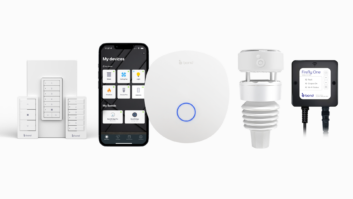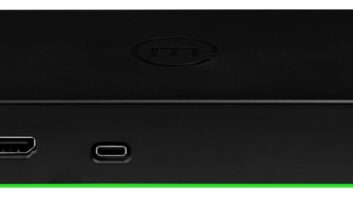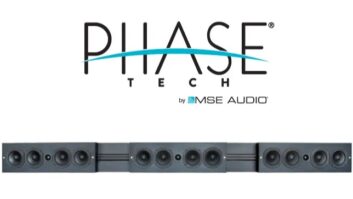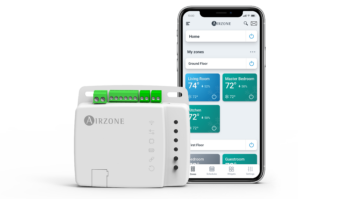NEW YORK — The explosion in the popularity of the app is reshaping how manufactures are viewing these small, but often very consumer-friendly, pieces of software as they develop their products.
The app itself is really is nothing new — software designed to enhance a specific product or activity has been around since the first computer hit store shelves — but the ubiquity of the smartphone and tablet tied to the consumer’s desire to do everything from a mobile platform has opened a new door for vendors. It has also created some new issues while developing products.
This opportunity now involves creating not only an added value for their device, but potentially entirely new revenue streams, as well as meeting customers’ demand to be able to access their entire digital lives wherever they may be.
The need for an app to be included with each product is now a foregone conclusion at most companies, particularly those wishing to add a mobile component to an otherwise deskbound device.
Network-attached storage and hard-drive maker Seagate sees the need to have an app with each of its models.
Jerry Hamrock, Seagate’s product line management director, said the company views apps as an indispensible aspect of the product development cycle.
“The customer’s expectation now is that a product will have an app, and it is a negative if you don’t,” he said. This has, however, added to the overall stress level with a new product launch.
Hamrock noted that consumers expect apps to make their life easier and add a level of enjoyment to what might normally be a basic productivity or maintenance process, such as backup or on the ability to access stored data outside the home.
“Easy is hard to do,” he said, “but apps should make it easier on people in the long run.”
Apps may even be reaching the point where their availability and usefulness could be the deciding factor in a purchase, said Cedar Milazzo, product management senior director for Netgear’s Genie+ marketplace, adding Netgear will not release any device without app support.
To spotlight the apps associated with a product, Netgear is now placing POP material on its boxes highlighting the apps, Milazzo said.
Greg Boyle, Trend Micro’s senior global marketing manager for mobile, said the general trend is for each launch to have an associated app, but he cited some cases where the software might not be needed to make the sale.
“It also depends on the target audience and what access they have to smartphone/tablet technology and the Internet. Not all consumers are comfortable using smartphones and tablets, and so resources can be wasted if you don’t have a clear target in mind,” Boyle said.
An app’s overall importance to both a product and the company itself should not be overlooked, said Brian Blau, consumer technology and markets research director for Gartner. The research firm has found that on the average, consumers are very open-minded about experimenting with new apps. People try out an average of five new apps per month. On the downside, these same folks are more than happy to dump an app that is not delivering what they need.
“Increasingly, apps are the preferred interface with the company itself and are used instead of going onto the web and typing in the brand name,” Blau said.
One area companies are still working out in regards to app development is exactly what it should deliver to the consumer. The question remains as to whether it is simply an additional utility, part of an overall solution, or a completely separate user experience.
“If you’re building an app to go alongside another product, then it’s not about a product — it’s about a solution. So, in many cases, the app needs to support and integrate with the overall solution, but it really shouldn’t end there,” Boyle said.
Milazzo added that Netgear intends to use apps to bring functionality and increase the lifespan of older products. “We want to change the idea that when you buy a product, you are stuck with the original [device] forever. Instead it will be extended via apps,” he said. Milazzo does not think this will hinder future upgrade sales as the company will continue to roll out improved products, but it will act as a differentiator with its competitors.
While the vast majority of apps available are freebies, some companies like Netgear think there is some gold to be mined from this area. Netgear is looking to accomplish this by building a platform that allows third-party developers to create apps specifically for Netgear products. So last year the company opened the Netgear’s Genie+ marketplace. Milazzo said this is the company’s equivalent of Google Play or Apple App Store, where third-party developers can submit and sell apps designed specifically to work with Netgear’s product line Milazzo said.
“Hardware is now a low-margin almost commodity area, so to differentiate ourselves we have to look at the software,” Milazzo said, adding that Netgear expects the app revenue stream to eventually become an important revenue source to the company.
Like Apple, Netgear intends to keep a portion of the app revenue while passing along the rest to the developer, he said. The store can be directly accessed via the product’s user interface and Netgear vets and supports all the thirdparty apps. About 80 percent of the apps now in the store are paid, Milazzo said.
However, creating a large enough installed base of available apps that are specific to a single company will be a challenge, Blau said.
“Spinning up an app store and ecosystem is no easy task. The question would be, ‘Could you get the scale to make it worthwhile?’ ” Blau said.
With that said, Gartner does see some legitimacy in the trend and an increase in the number of app stores in the future.
Seagate’s Hamrock said his company is not convinced it needs to develop its own app store, citing the fact that Android and Apple pretty much take care of that end of the business.
The general consensus is also that consumers probably will not pay for a product-specific app.
“However, like most things, when there is real value provided and they receive an enhanced experience, they will be willing to pay for it. I think it will be a case of solutions being created that give consumers choice with base models not including mobile solutions and premium offerings that give users an enriched mobile experience,” Boyle said.













